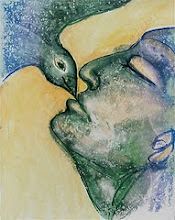Psychosynthesis
Psychosynthesis is an approach to psychology that was developed by Roberto Assagioli, M.D. Assagioli asserted that "the direct experience of the self, of pure self-awareness... - is true." Spiritual goals of "Self-Realization and the "interindividual psychosynthesis were central to Assagioli's theory.
Psychosynthesis is therefore one of the earliest forerunners of both humanistic psychology and transpersonal psychology, even preceding Jung’s break with Freud by several years. Assagioli’s conception has an affinity with existential-humanistic psychology and other approaches which attempt to understand the nature of the healthy personality, personal responsibility and choice, and the actualization of the personal self; similarly, his conception is related to the field of transpersonal psychology, with its focus on higher states of consciousness, spirituality, and human experiencing beyond the individual self.
Tai chi chuan
Tai chi training primarily involves learning solo routines, known as forms. While the image of tai chi chuan in popular culture is typified by exceedingly slow movement, many tai chi styles have secondary forms of a faster pace. Some traditional schools of tai chi teach partner exercises known as "pushing hands", and martial applications of the forms' postures.
The art received its name when Ong Tong He, a scholar in the Imperial Court, witnessed a demonstration by Yang Lu Chan ("Unbeatable Yang"). Ong wrote: "Hands holding Taiji shakes the whole world, a chest containing ultimate skill defeats a gathering of heroes."
Anthroposophy
A phylosophy founded by Rudolf Steiner, postulates the existence of an objective, intellectually comprhensible spiritual world accessible to direct experience through inner development. More specifically, it aims to develop faculties of perceptive imagination, inspiration and intuition through cultivating a form of thinking indipendent of sensory experience, and to present the results thus derived in a manner subject to rational verification. In its investigations of the spiritual world, anthroposophy aims to to attain the precision and clarity attained by the natural sciences in their investigations of the physical world.
Anthroposophical ideas have been applied practically in many areas including Waldorf education, agricuture, medicine, ethical banking, organizational development and the arts. The Antrhoposophycal Society has its international centre at the Coetheanum in Dornach, Switzerland.
Modern Geomancy
Based on the principle of multidimensionality, the modern geomancy is teaching how to perceive landscapes and environments as composed of several visible and invisible levels and how to behave accordingly.
The knowledge of modern geomancy can be used in the area of nature protection, landscape and architectural design, planning of motor ways, in Earth healing etc.
The word “Geomancy” comes for the Greek name of the Earth Soul, “Gea” and the Greek word “mantein”, which means interpreting, also reading an oracle.
In this sense geomancy means interpreting of visible and invisible dimensions of places and landscapes, so that a holistic (pluridimensional) understanding of their true essence can emerge in our consciousness.
skip to main |
skip to sidebar

The privilege of a lifetime is being who you are (J. Campbell)
Informazioni personali

Etichette
gardening
la magia dei luoghi
the way of trees
giardinaggio
the magic of places
ecosofia
la via degli alberi
ecosophy
arte di guarire la terra
garden philosophy
urban nature
community gardens
earth healing
la via dei fiori
meadows
the way of flowers
ecologia profonda
giardino
the way of words
deep ecology
english gardens
garden
giardini da sentire
graminacee
hero's journey
il viaggio dell'eroe
la via delle parole
prati
wildlife gardening
Great Dixter
Wheel of the Year
deep gardening
fiume
gardens to feel
giardinaggio profondo
il respiro di Gaia
la via dei libri
la via del giardino
new perennials
ornamental grasses
phyto-resonance
river
wildlife
alberi
cultura del giardino
flowers
la Via del Guerriero
la ruota dell'anno
london
native plants
natura urbana
piet oudolf
potted garden
primavera
roof garden
silence
silenzio
spring
the Way of the Warrior
the breath of Gaia
the way of books
trees
vision
vision quest
allium globe master
allium schoenoprasum
autobiografia
biofilia
bionomia
buxus
clematis vitalba
cosmogramme
dan pearson
ecovillage Findhorn
fiori
flow form fountain
fountain
geofilia
geosofia
geosophy
honeysuckle
human ecology
la Via del Teatro
la via dei film
lambro
lawns
linaria vulgaris
lonicera
lupinus
maggio
mandala
may
mito-botanica
on my terrace
paths
paulownia tomentosifolia
pond
private garden
self-biography
sitting spot
stagno
sul mio terrazzo
tappeto erboso
terrace
terrazzo
the garden way
the way of movies
tree hugs
tree-climbing
ulmus hollandica
Links
- Animamente
- Associazione Ecofilosofica
- Coltivare con l'agricoltura biodinamica
- Derrynagittah
- DesignersOnDesign
- Geofilosofia
- Giardineria
- Il Canto degli Alberi
- Il giardino di Pimpinella
- Immaginale
- My garden is my joy
- Petrarca European Academy for the Culture of Landscape
- Plants for a future
- Poetseers
- The High Line
- The Natural Change Project
- Thinking gardens
- Warrior Spirit
- Wild London
Blog roll
Lettori fissi
tutte le immagini e i testi sono originali a meno che diversamente indicato

